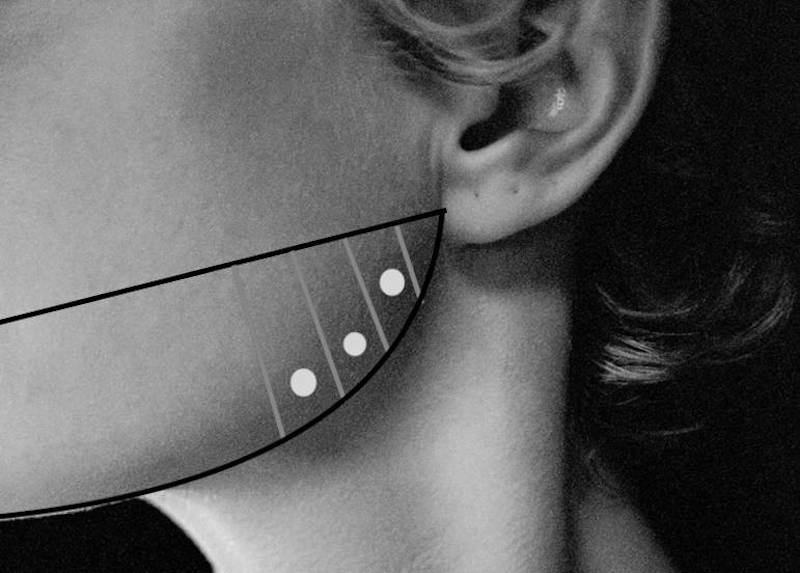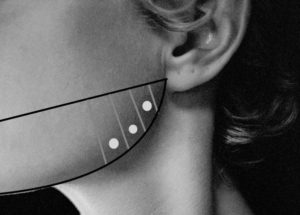Jaw reduction is a generic term for a variety of lower facial reshaping procedures. Often lumped into one general category, the reality is that a variety of bone and muscle reshaping procedures are available to create a lower jaw that appears more narrow or slimmer. While these jaw reduction procedures are done for largely an aesthetic slimming effect, each technique differs in the specific dimensional changes that are created in the lower face. The two general types of jaw reduction have two different tissue targets, muscle and bone.
The masseter muscle is a large soft tissue structure that is stretched out between the zygomatic arch (origin) and the bony jaw angle. (insertion) It actually has two heads, superficial and deep. It is the superficial head of the muscle that reaches all the way down and attaches to the inferolateral surface of the bony jaw angle. The deep head is actually thicker and inserts much higher onto the upper ramus near the coronoid process. Thus the thickest part of the muscle is at the mid ramus where the two heads overlap, not down lower around the bony jaw angle.

There are also other minimally invasive treatments for masseter muscle reduction which are radiofrequency (RF) ablation treatments. By placing electrodes through the oral mucosa inside the mouth and onto the inner surface of the muscle focal areas of muscle necrosis occur. Long term results show that it produces a more pronounced masseter muscle reduction as well as a permanent one compared to Botox injections. But such radio frequency treatments are not widely available and require some form of anesthesia to undergo due to associated discomfort during the treatment.
Surgical masseter muscle reduction can also be done but this does not refer to the excision of segments of the muscle. This is generally not a preferred technique of muscle reduction due to the risks of intraoperaive bleeding and the high likelihood of creating external contour irregularities. An alternative approach which is similar to radiofrequency ablation is electocautery reduction. With this technique an incision is made inside the mouth and the inner surface of the muscle is lifted off of the bone. The inner surface of the muscle is then treated by direct electrocautery using a fine tipped needle at spot locations in a grid pattern. This has no risks of causing bleeding or muscle irregularities.
Dr. Barry Eppley
Indianapolis, Indiana





